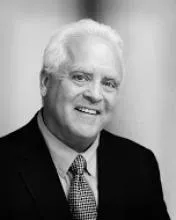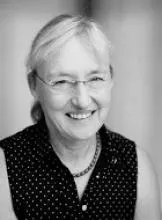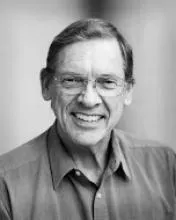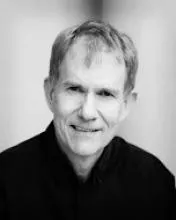

The Histories and Mysteries of Heaven
Oct. 14, 2015
J. Edward Wright
Many people imagine heaven as a spectacularly beautiful place somewhere “up there” where God resides and where loved ones are finally and eternally united. How did the hope for a blessed afterlife arise and evolve in Western religions? Why did the hope for a heavenly afterlife become so powerful? And what do our images of the afterlife reveal about our deepest fears and highest hopes as humans today? In this lecture, Professor Wright will address these and other questions related to the power of afterlife beliefs and images of heaven. He will also explore possibilities for future images of the afterlife in light of recent advances in technology and modern science.

Love and Death in the Stone Age
Oct. 21, 2015
Mary Stiner
When we die, we live on as a persistent presence in the minds and memories of our loved ones. Loved ones left behind have many ways of maintaining connections with their deceased, most notably marked burials in quiet places where the living are likely to return and visit. Humans are the only kind of animal that buries their deceased loved ones and, as it happens, this gesture is preserved in some ancient archaeological sites. The emergence of burial traditions in the Stone Age implies that certain pre-modern humans (the Neanderthals) had already begun to care for the person as a unique, irreplaceable individual. In this lecture, Professor Stiner explores the origins of this essential human development, which likely represents the first cognitive bridge between the living and the deceased in human evolution.

The Dark Immortality of the Vampire
Oct. 28, 2015
Jerrold Hogle
In time for Halloween, Professor Hogle will explore the surprising evolution of the vampire as an immortal being and why it has has become increasingly popular as both a desirable and an ominous figure. For centuries, the mythic figure of the vampire embodied an evil immortality, bent on sucking life-blood from the living. Incorporated into 19th century Gothic fiction, this figure became symbolic of social and psychological evils, such as (sadly) the threat to "white purity" from the blood of other races, the depravity of the old-world aristocracy (as in Count Dracula), or the feared aggressiveness and greater independence of "liberated" women. But towards the end of the 20th century, the vampire-figure started to become "good" in some fictions and films. What does this recent change say about our modern social and cultural values?

Two Ancient Philosophers on Why Death is No Evil
Nov. 4, 2015
Rachana Kamtekar
What happens to us after we die? The ancient philosopher Plato claims that our soul is immortal and after death, undergoes reward or punishment, followed by reincarnation. Another ancient philosopher, Epicurus, argues that our soul disperses at death, extinguishing our consciousness. Yet neither philosopher thinks that death is to be feared, and both argue that understanding death gives us reason to live a philosophical life in the present. Philosophy professor Rachana Kamtekar explains how Plato and Epicurus came to such similar conclusions from very different starting points and explores the relevance of their views for us today.

The Elusive Self in Life and Death
Nov. 11, 2015
Shaun Nichols
Professor Shaun Nichols and his research team spent months exploring attitudes towards death among Hindus and Tibetan Buddhists in India. His exploration was prompted by the philosophical argument that we should not fear the idea of death because there is no enduring self that remains exactly the same even during biological life. At most we (our selves) are a collection of values, convictions, and memories undergoing constant change. From this perspective, the future “you" who dies will not be the same person as “you" today. Because Tibetan Buddhists embrace the concept that there is no enduring self throughout biological life, they should be less afraid of death at the end of biological life. But are they? His findings may surprise you.

